There are at least two dozen birds from all around the world whose common names start with the last and best letter of the alphabet, Z. Read on to discover the largest, smallest, and rarest, along with all the rest!
The Largest Bird That Starts With Z
1. Zone-Tailed Hawk (Buteo albonotatus)
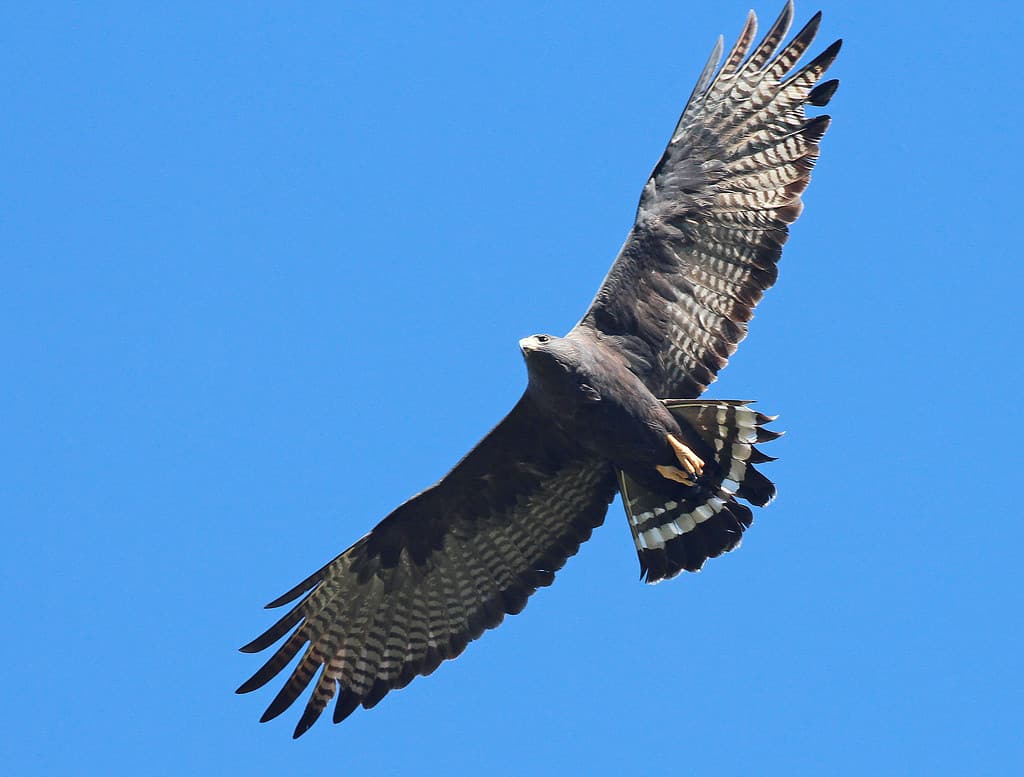
Zone-tailed hawks soar with their wings in a dihedral position, also commonly known as a “v” shape.
©ALAN SCHMIERER / CC 1.0 – License
IUCN Status: Least Concern
length 45–56 cm; wingspan 119–140 cm; mass 610–940 g
The zone-tailed hawk may be the largest bird on this Z list, but it’s only a medium-sized buteo. This bird of prey is native to the Americas, with a range that spans from the Neotropics into the Southwestern United States.
The Smallest Bird That Starts With Z
2. Zebra Waxbill (Amandava subflava)
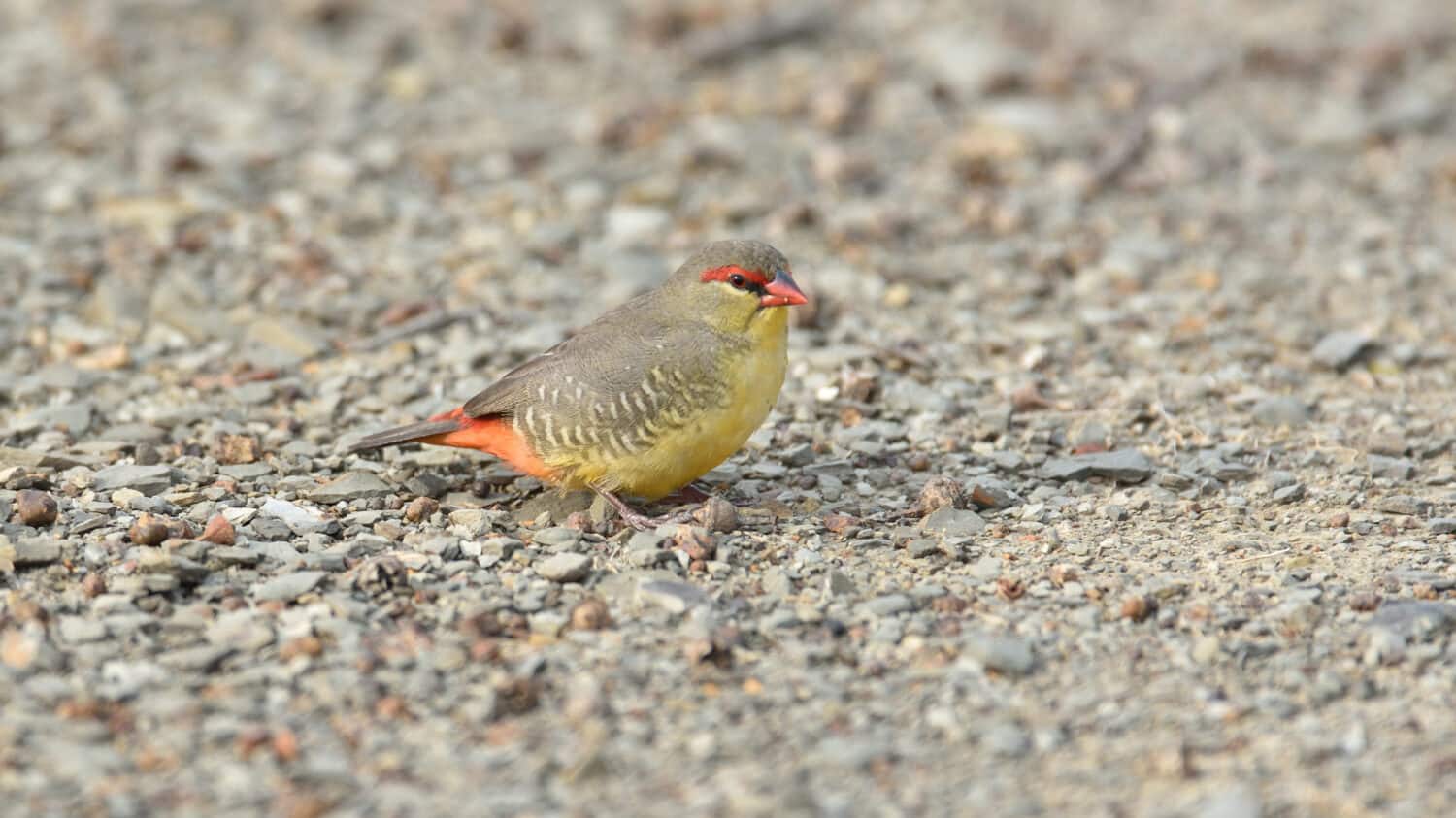
While both male and female zebra waxbills have red rumps, only the male also has a red eyebrow.
©Clayton Burne/Shutterstock.com
IUCN Status: Least Concern
length 9 cm; mass 5.2-10.9 g
On the other end of the size scale is this wee waxbill. The zebra waxbill, also known as the orange-breasted waxbill, is an estrildid finch species native to grasslands and savannahs in areas of Sub-Saharan Africa.
The Rarest Bird That Starts With Z
3. Zapata Rail (Geopelia striata)

Scientists only first described the Zapata rail in 1927, and only a handful of sightings have been documented since the 1930s.
©Allan Brooks (1869-1946), in Thomas Barbour / CC0 – License
IUCN Status: Critically Endangered
length 29 cm
The Zapata rail is an elusive bird endemic to the wetlands of the Zapata Peninsula in Cuba. Very little is still known about this rarely documented and critically endangered rail species. Based on its short wings, however, it is assumed to be virtually flightless.
More Birds That Start With Z
4. Zambezi Indigobird (Vidua codringtoni)
IUCN Status: Least Concern
length 10–11 cm; mass 11.4-14.1 g
The Zambezi indigobird is also known as the green indigobird. This species is native to Malawi, Tanzania, Zambia, and Zimbabwe in Africa. Its preferred habitat is lowland thickets, but it is also observed around airfields and campsites. It is a brood parasite that lays its eggs in both Peters’s Twinspot (Hypargos niveoguttatus) and Pink-throated Twinspot (Hypargos margaritatus) nests. Its image also appears on Zambia’s current 5 ngwee coin.
5. Zamboanga Bulbul (Hypsipetes rufigularis)
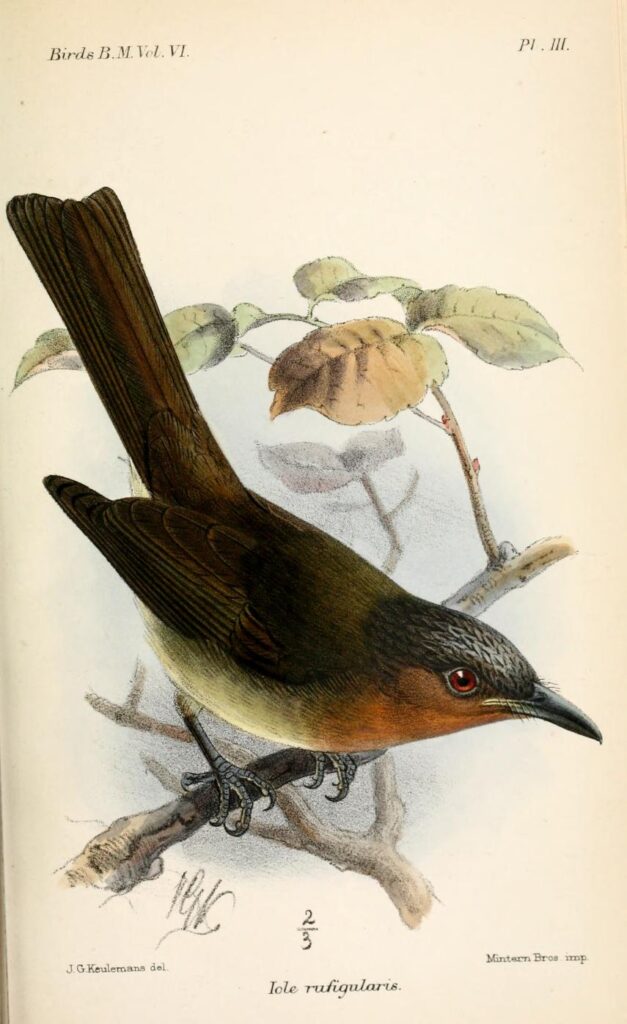
The Zamboanga bulbul is increasingly threatened by habitat loss.
©John Gerrard Keulemans / CC0 – License
IUCN Status: Near Threatened
length 24 cm; mass 48–71 g
The Zamboanga bulbul is a songbird endemic to both the Zamboanga Peninsula and the Province of Basilan in the Philippines, where it inhabits tropical and subtropical moist lowland forests.
6. Zanzibar Red Bishop (Euplectes nigroventris)
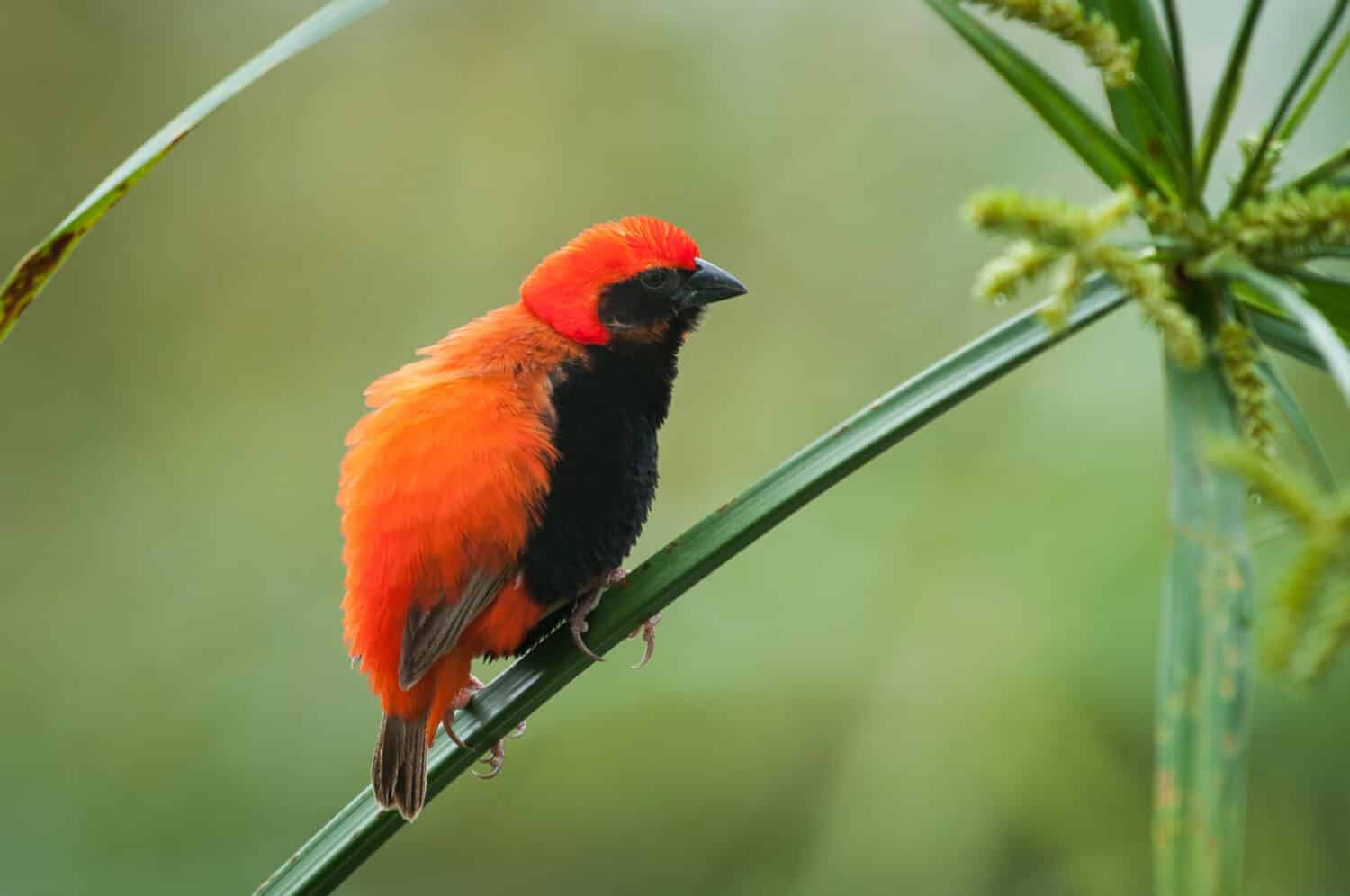
The male Zanzibar red bishop displays brilliant scarlet and black plumage.
©Bartosz Budrewicz/Shutterstock.com
IUCN Status: Least Concern
length 10 cm; mass 11–14 g
The Zanzibar red bishop is endemic to coastal regions and offshore islands of Kenya, Mozambique, Tanzania, and Zanzibar in Africa.
7. Zapata Sparrow (Torreornis inexpectata)

The Zapata sparrow is only found in three separate populations in Cuba.
©neil bowman/iStock via Getty Images
IUCN Status: Near Threatened
length 16.5 cm
The Zapata sparrow is also known as the Cuban sparrow. As its common names suggest, it is endemic to Cuba, and one of its three known subspecies can be found in sawgrass prairies of the Zapata Swamp. A second subspecies resides in coastal scrub and low forest in two cays of the Sabana-Camagüey archipelago, while the third inhabits thorn scrub in the southeastern part of the main island.
8. Zapata Wren (Ferminia cerverai)

The Zapata wren is the only wren species known to breed in Cuba.
©spatuletail/Shutterstock.com
IUCN Status: Endangered
length 15.5–16 cm
The Zapata wren is another imperiled bird species endemic to the Zapata Swamp in Cuba. It is an omnivore that nests in sawgrass tussocks.
9. Zappey’s Flycatcher (Cyanoptila cumatilis)
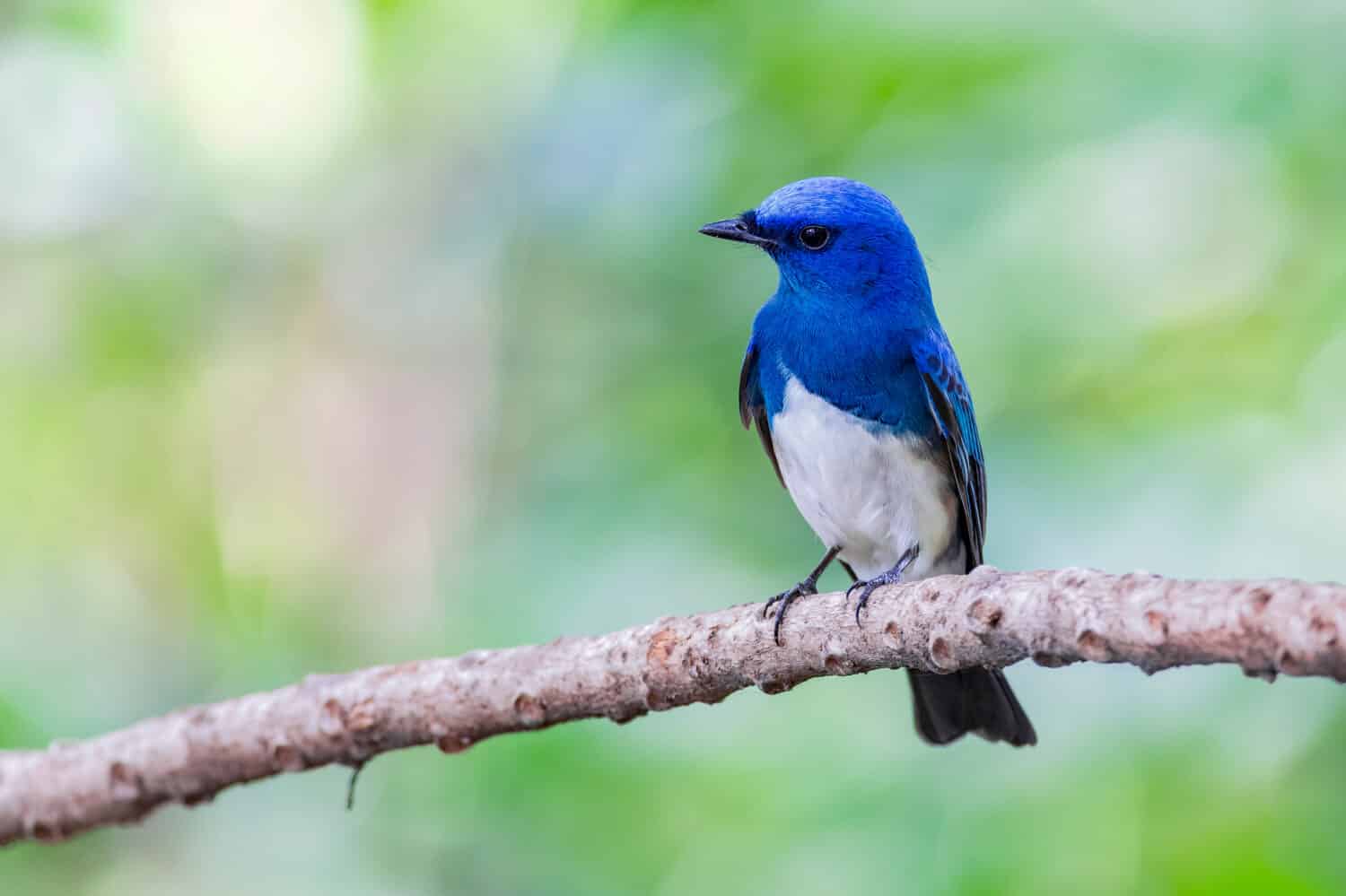
The male Zappey’s flycatcher displays rich azure and white plumage.
©tanoochai/Shutterstock.com
IUCN Status: Near Threatened
length 16–17 cm; 25 g
Zappey’s flycatcher is a forest bird native to Asia. It is a migratory species that breeds in China and then overwinters in Southeast Asia.
10. Zarudny’s Sparrow (Passer zarudnyi)
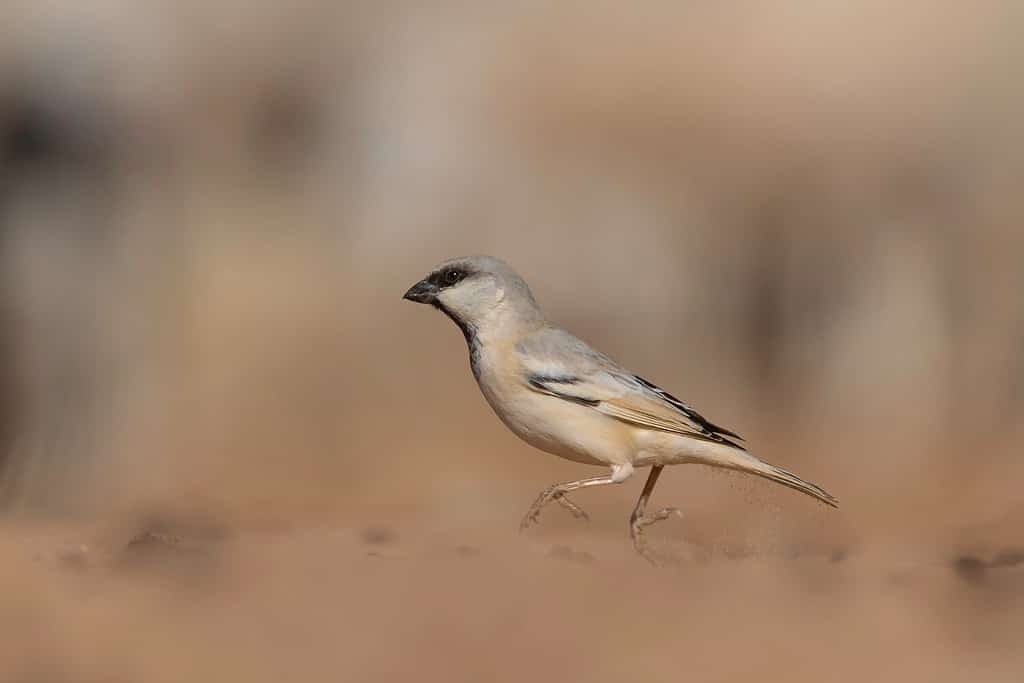
Zarudny’s sparrow was until recently considered a subspecies of the desert sparrow (
Passer simplex).
©toufik lemoufek/Shutterstock.com
IUCN Status: Least Concern
length 13.5–15 cm
Zarudny’s sparrow is also known as the Asian desert sparrow. It is native to Turkmenistan and Uzbekistan in Central Asia, where it inhabits bare, rocky areas with sparse vegetation.
11. Zebra Dove (Geopelia striata)

Zebra doves are popular in the captive bird trade and have spread far beyond their native range through both intentional releases and unintentional escapes.
©Cocotier Tours/Shutterstock.com
IUCN Status: Least Concern
length 20.5–21.5 cm; mass 50–72 g
The zebra dove is also known as the barred ground dove. It is native to Southeast Asia but has been widely introduced elsewhere across the Indo-Pacific region and even as far as Hawaii. It can be found in a variety of open habitats and is regularly seen in parks and gardens.
12. Zebra Finch
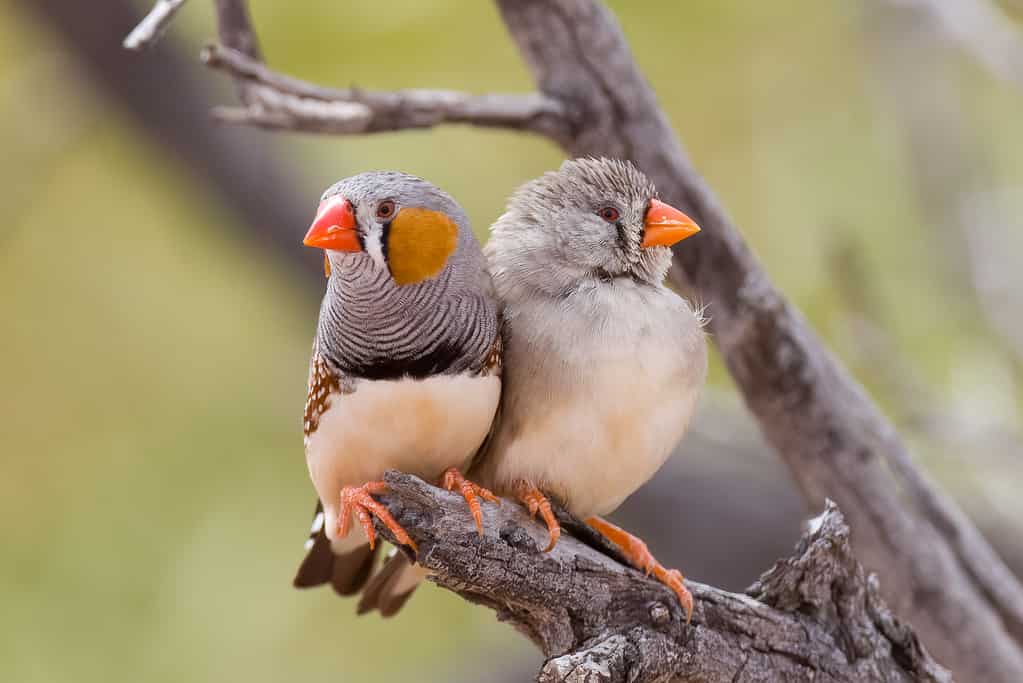
Ther term zebra finch refers to two specific species.
©CC BY-SA 4.0 – License
IUCN Status: Least Concern (both species)
length 10 cm; mass 10 g
The zebra finch may lose its place on this list if the two new names associated with a recent taxonomic split become more widely accepted. Some sources still list the Australian zebra finch and the Sunda zebra finch as subspecies of the zebra finch (T. g. guttata and T. g. castanotis respectively). Others, however, including the IUCN, have elevated each to the species level as Taeniopygia castanotis and Taeniopygia guttata. As the new common names suggest, the subspecies/species are native to the Lesser Sunda Islands of Indonesia and mainland Australia.
13. Zeledon’s Antbird (Hafferia zeledoni)
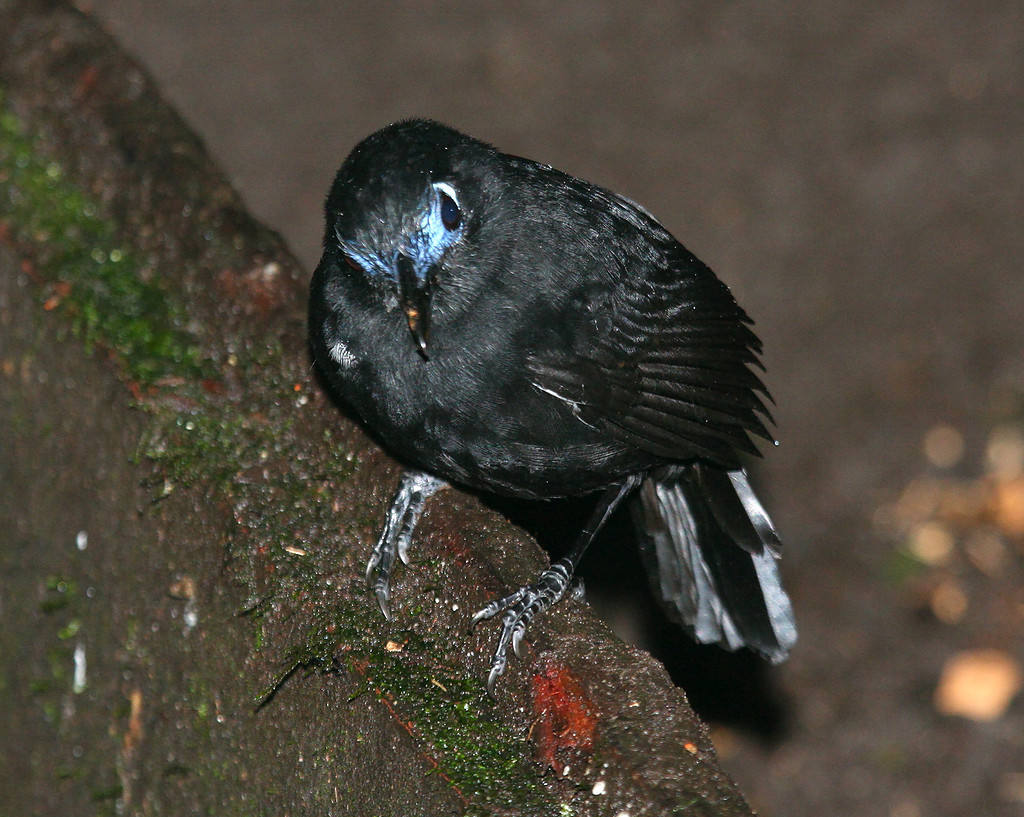
While the male Zeledon’s antbird is a rich black color, the female is a deep chocolate brown.
©Gary L. Clark / CC BY-SA 4.0 – License
IUCN Status: Least Concern
length 17–19 cm; mass 39.9–55.5 g
Zeledon’s antbird is native to Nicaragua, Costa Rica, and Panama in Central America, as well as the Pacific slope of Columbia and Ecuador in South America. It inhabits lowland humid forests. Its name comes from Costa Rican ornithologist José Cástulo Zeledón (1846-1923).
14. Zenaida Dove (Zenaida aurita)

The Zenaida dove is often confused for the
mourning dove
(
Zenaida macroura), but it is smaller with subtle differences in color.
©phototrip/iStock via Getty Images
IUCN Status: Least Concern
length: 28–30.5 cm; mass 110–194 g (male), 95–180 g (female)
The Zenaida dove occurs throughout the Caribbean islands as well as the northern coast of the Yucatan Peninsula. It is also the official national bird of Anguilla, where it is more commonly called the turtle dove.
15. Zenker’s Honeyguide (Melignomon zenkeri)
IUCN Status: Least Concern
length 14.5 cm; mass 24–25 g (female)
Zenker’s honeyguide is native to forests of Central Africa. Its name honors German naturalist Georg Zenker (1855-1922).
16. Zigzag Heron (Zebrilus undulatus)
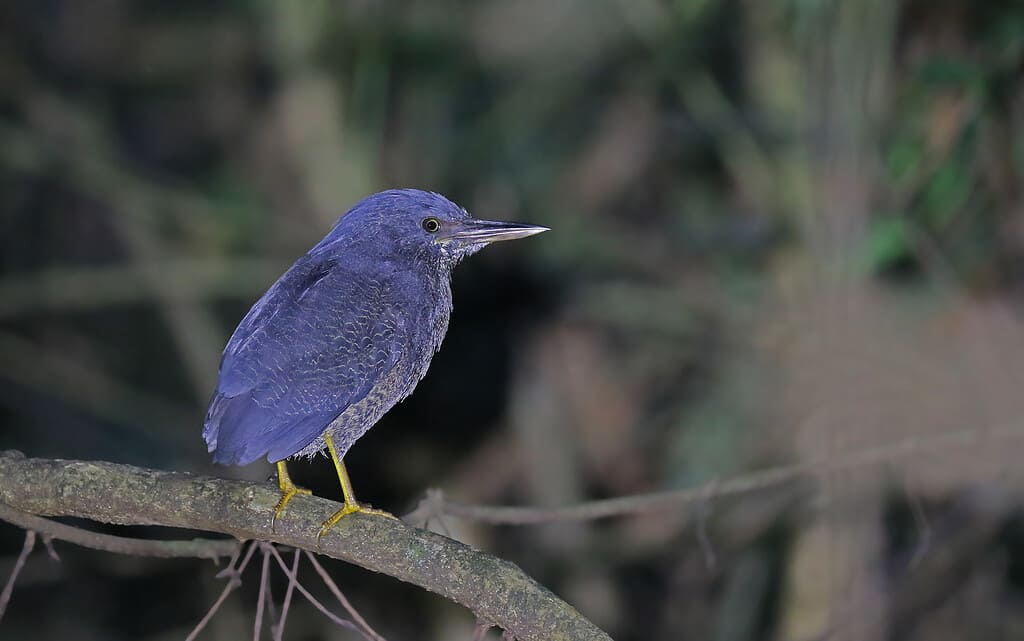
©Christoph Moning / CC BY 4.0 – License
IUCN Status: Least Concern
length 28–33 cm; mass 123 g
The zigzag heron is a bittern native to tropical and subtropical swamps across several countries in northern South America. The species gets its name from the zigzag barring pattern of the adult’s plumage.
17. Zimmer’s Flatbill (Tolmomyias assimilis)

Zimmer’s flatbill has an overall olive tinge to its appearance.
©Hector Bottai / CC BY-SA 4.0 – License
IUCN Status: Least Concern
length 13–13.5 cm; mass 12–17.5 g
Zimmer’s flatbill is also known as the yellow-margined flatbill. It ranges across northern South America east of the Andes, where it inhabits tropical and subtropic moist lowlands and swamps. This and the next three birds are all eponyms honoring American ornithologist John T. Zimmer (1889-1957).
18. Zimmer’s Tapaculo (Scytalopus zimmeri)

Zimmer’s tapaculo often makes its home in rocky, wooden ravines.
©Nick Athanas / CC BY-SA 2.0 – License
IUCN Status: Least Concern
length 10.5 cm; mass 17.6–19.9 g (male), 15.9 g (female)
Zimmer’s tapaculo is native to the Andean slopes of parts of Bolivia and Argentina in South America. It is a ground-feeding species that forages for seeds and insects.
19. Zimmer’s Tody-Tyrant (Hemitriccus minimus)

Zimmer’s tody-tyrant has a wide but scattered distribution across Amazonia.
©Hector Bottai / CC BY-SA 4.0 – License
IUCN Status: Least Concern
length 10 cm; mass 6–8 g
Zimmer’s tody-tyrant is native to parts of Bolivia, Brazil, Ecuador, and Peru in South America. This insectivore species inhabits campinarana and similar shrubland habitats across the region.
20. Zimmer’s Woodcreeper (Dendroplex kienerii)

Zimmer’s woodcreeper is increasingly threatened by the continuing deforestation of the Amazon.
©Thiago Orsi Laranjeiras/Shutterstock.com
IUCN Status: Near Threatened
length 21–24 cm; mass 40–50 g
Zimmer’s woodcreeper is found along the Amazon River in Brazil, Columbia, and Peru in South America. Scientists still know little about its feeding and breeding habits.
21. Zino’s Petrel (Pterodroma madeira)
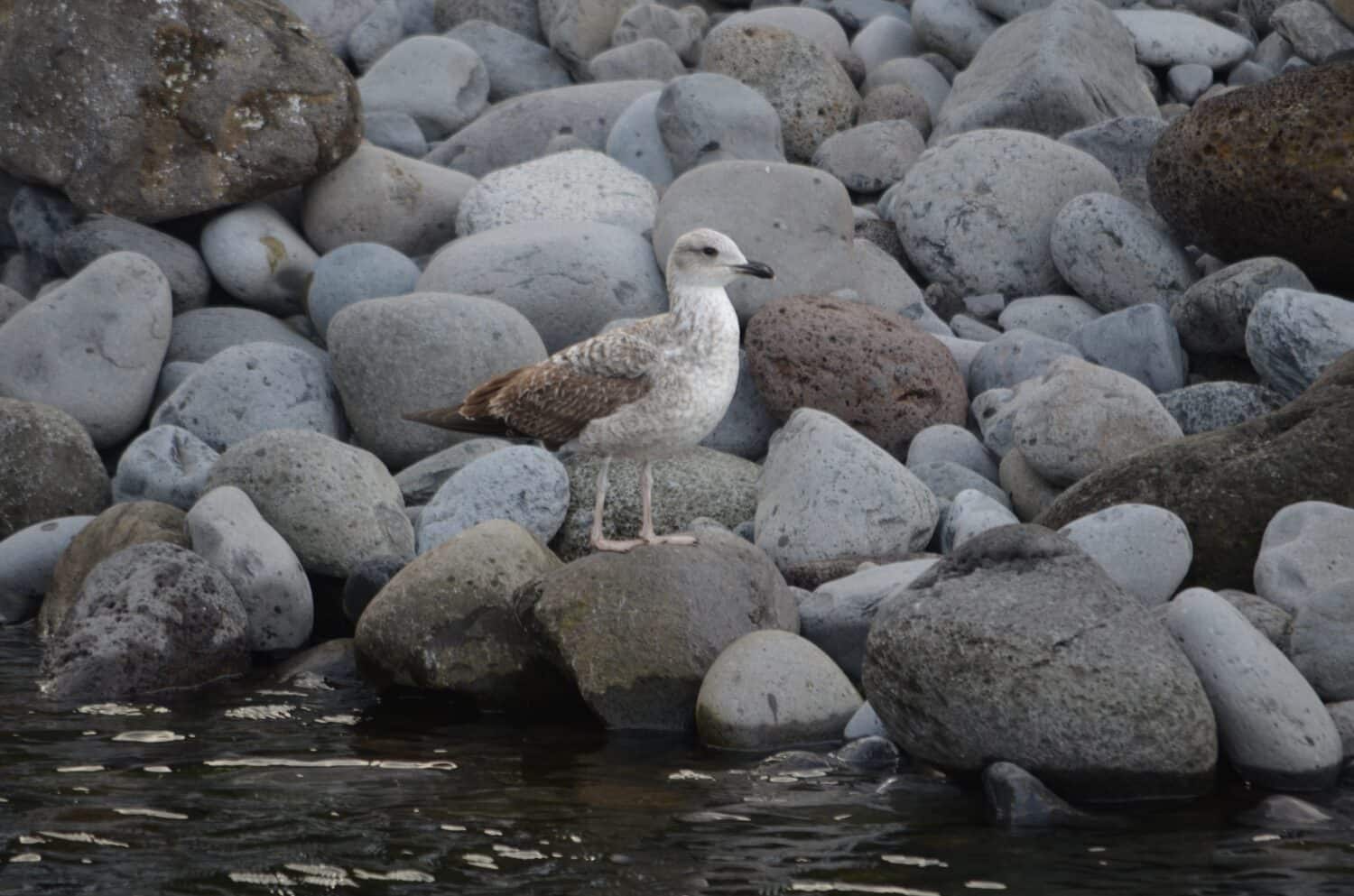
Zino’s petrel is an endangered species whose remaining population has been severely impacted both by fires and invasive predators.
©Monika Polackova/Shutterstock.com
IUCN Status: Endangered
length 30–35 cm; wingspan 80–84 cm; mass 175-280 g
Zino’s petrel is also known as the freira. This small seabird is endemic to the island of Madeira in the North Atlantic Ocean. The entire population breeds on just a half dozen cliff ledges on the central mountain massif of the island.
22. Zitting Cisticola (Cisticola juncidis)
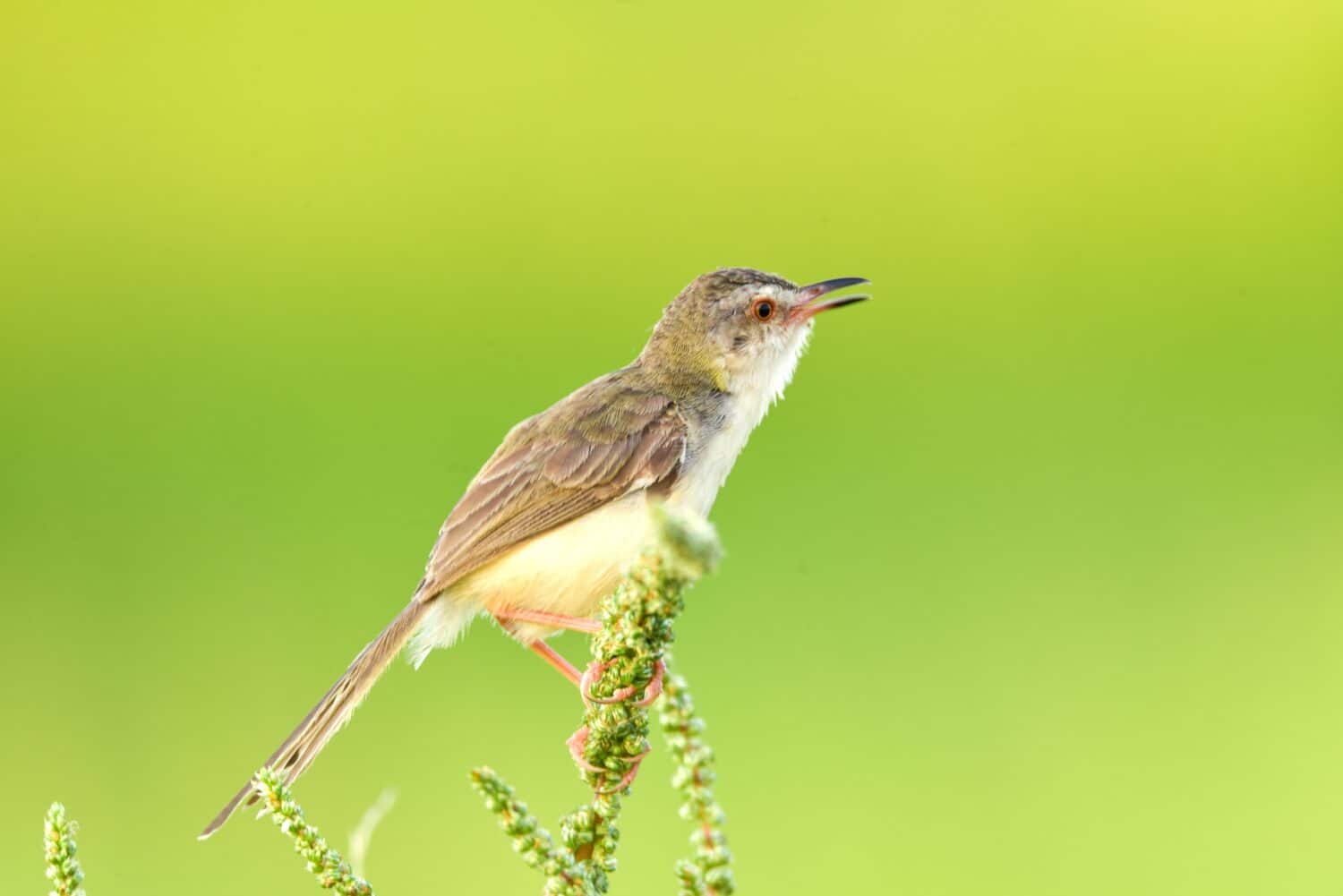
Zitting cisticolas are primarily insectivores.
©sarin nana/Shutterstock.com
IUCN Status: Least Concern
length 10–14 cm; mass 7–12 g (male), 5–8 g (female)
The zitting cisticola is also known as the streaked fantail warbler. It is widely distributed across grasslands in Europe, Africa, Asia, and Australia. Its name refers to the sound of its calls, which resemble the sound of scissors repeatedly snipping.
23. Zoe’s Imperial Pigeon (Ducula zoeae)

Like other imperial pigeons, Zoe’s imperial pigeon is frugivorous and forages for a variety of island fruits.
©Doug Janson / CC BY-SA 3.0 – License
IUCN Status: Least Concern
length 38–41 cm; mass 575–592 g
Zoe’s imperial pigeon is also known as the banded imperial pigeon. It is endemic to the forests of New Guinea and surrounding islands. The French ornithologist who first scientifically described the species, René-Primevère Lesson (1794-1849), named it after his wife, Zoë.
24. Zululand Batis (Batis fratrum)
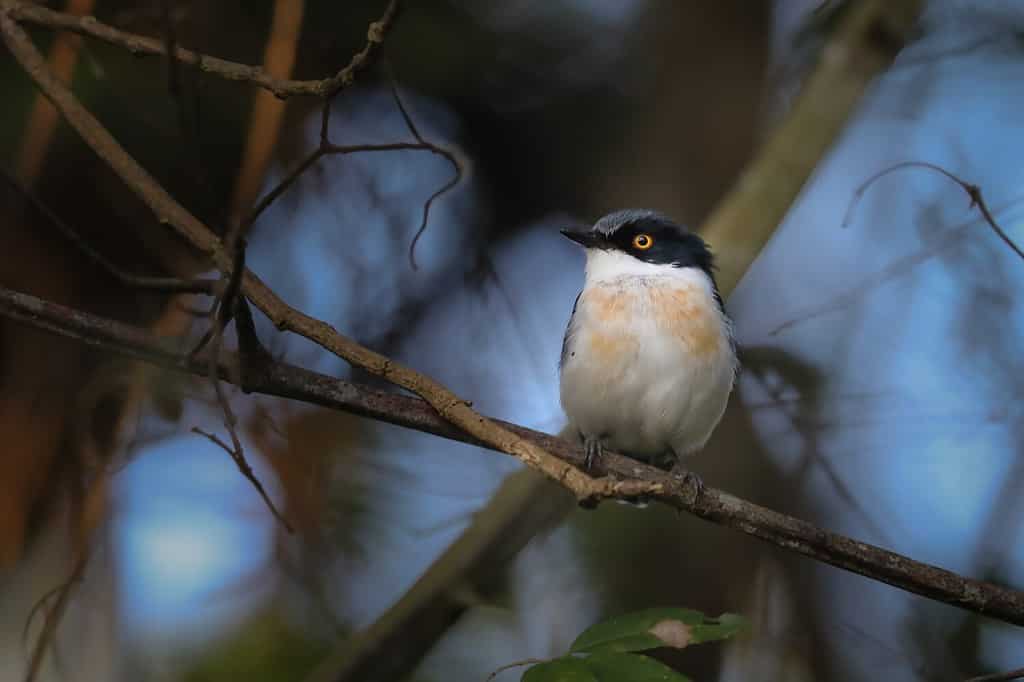
Batises are members of the wattle-eye family (Platysteiridae).
©JMx Images/Shutterstock.com
IUCN Status: Least Concern
Length 10.5 cm; mass 10.3–13.8g
The Zululand batis is also known as Woodward’s batis. It is native to Southeast Africa, where it inhabits woodlands and forests.
Summary of Discover 24 Amazing Birds That Start With Z
| Common Name | Scientific Name |
|---|---|
| Zambezi Indigobird | Vidua codringtoni |
| Zamboanga Bulbul | Hypsipetes rufigularis |
| Zanzibar Red Bishop | Euplectes nigroventris |
| Zapata Rail | Geopelia striata |
| Zapata Sparrow | Torreornis inexpectata |
| Zapata Wren | Ferminia cerverai |
| Zappey’s Flycatcher | Cyanoptila cumatilis |
| Zarudny’s Sparrow | Passer zarudnyi |
| Zebra Dove | Geopelia striata |
| Zebra Finch | Taeniopygia guttata |
| Zebra Waxbill | Amandava subflava |
| Zeledon’s Antbird | Hafferia zeledoni |
| Zenaida Dove | Zenaida aurita |
| Zenker’s Honeyguide | Melignomon zenkeri |
| Zigzag Heron | Zebrilus undulatus |
| Zimmer’s Flatbill | Tolmomyias assimilis |
| Zimmer’s Tapaculo | Scytalopus zimmeri |
| Zimmer’s Tody-Tyrant | Hemitriccus minimus |
| Zimmer’s Woodcreeper | Dendroplex kienerii |
| Zitting Cisticola | Cisticola juncidis |
| Zoe’s Imperial Pigeon | Ducula zoeae |
| Zone-Tailed Hawk | Buteo albonotatus |
| Zululand Batis | Batis fratrum |
The photo featured at the top of this post is © ChocoPie/Shutterstock.com
Thank you for reading! Have some feedback for us? Contact the AZ Animals editorial team.







